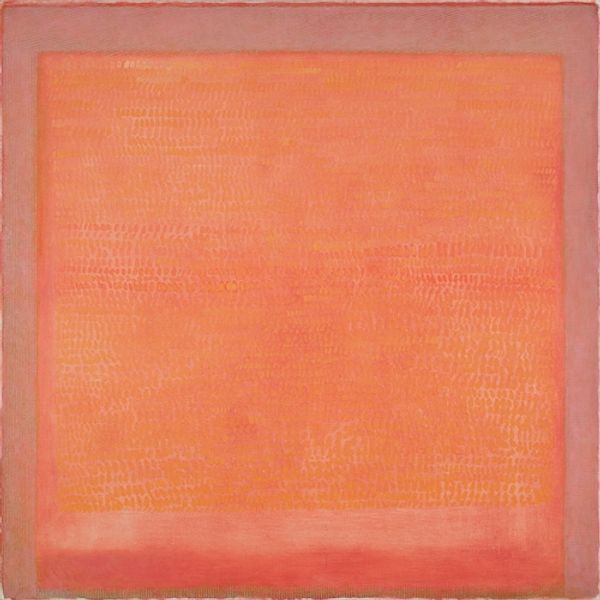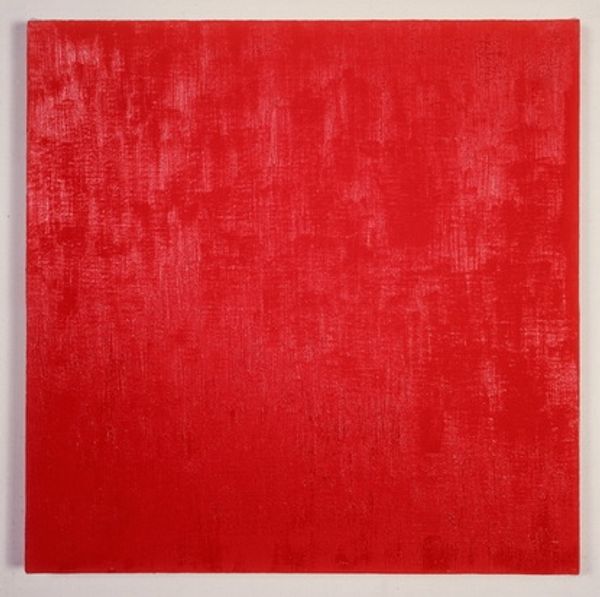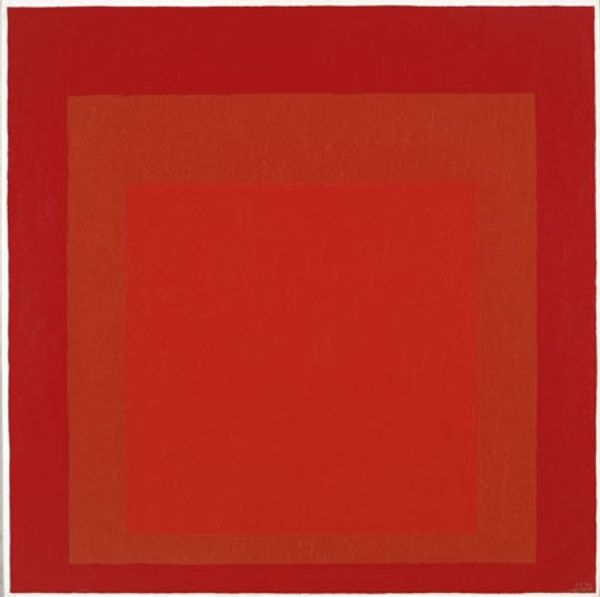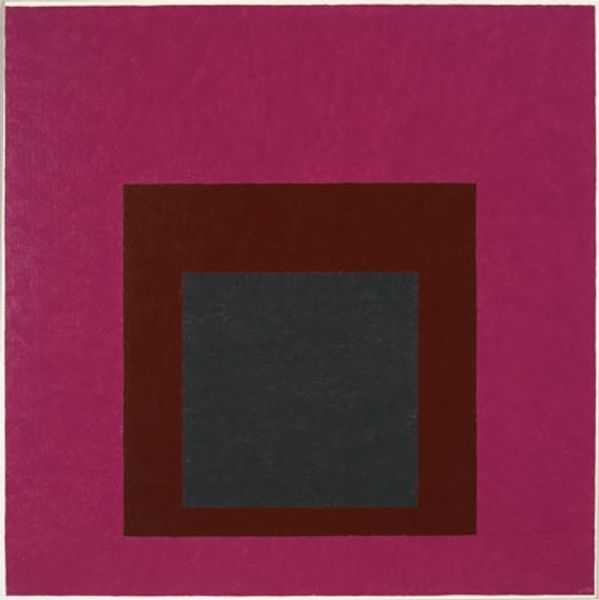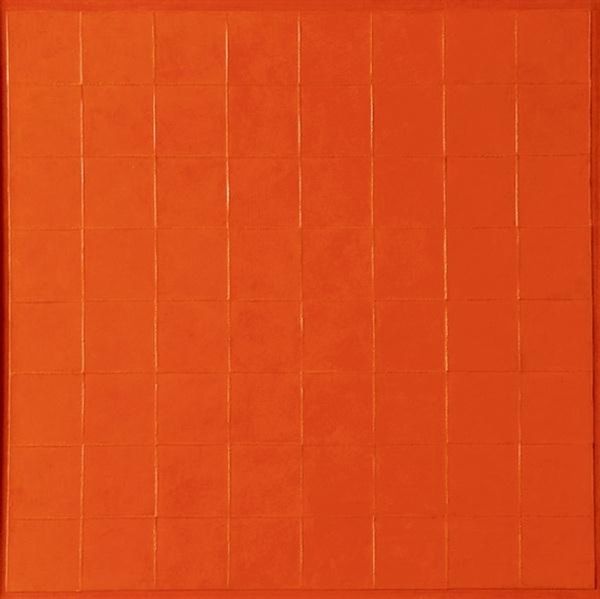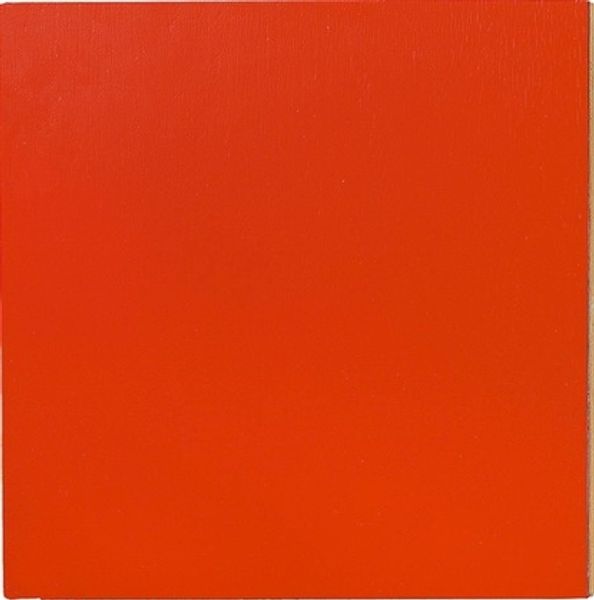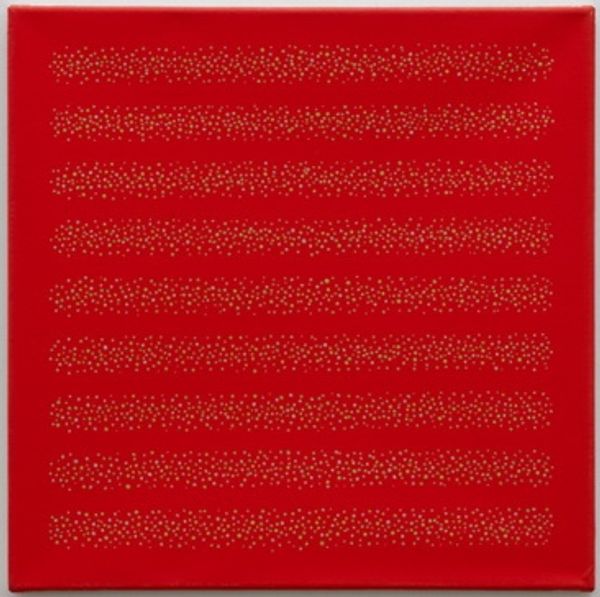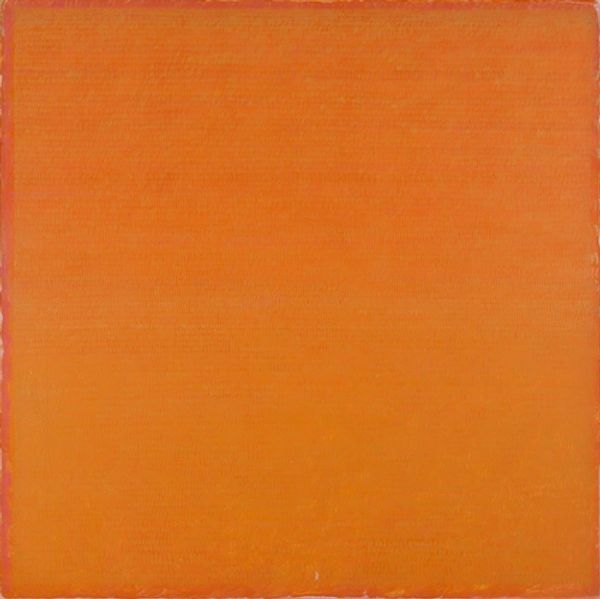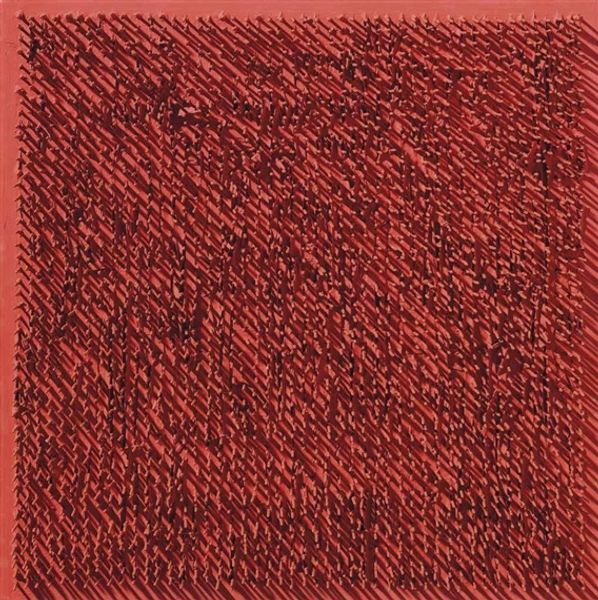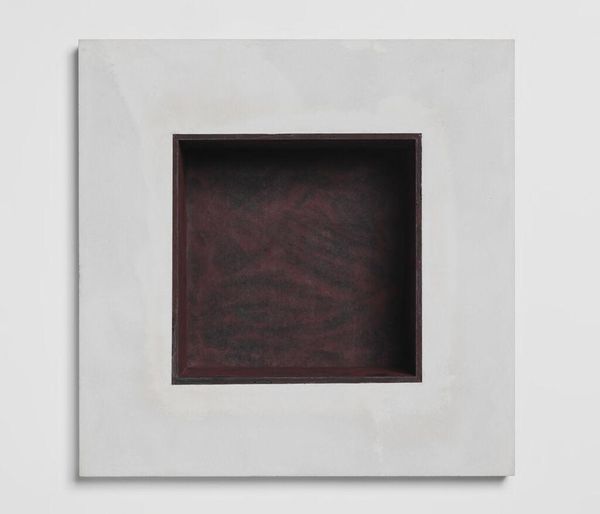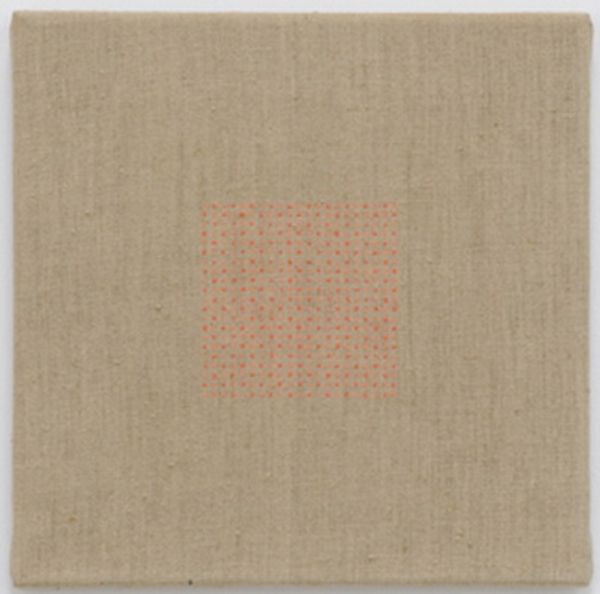
mixed-media, matter-painting, mixed-media
#
mixed-media
#
matter-painting
#
geometric pattern
#
abstract pattern
#
minimal pattern
#
geometric
#
mixed-media
#
pattern repetition
Copyright: Bernard Aubertin,Fair Use
Editor: This is "Clous fluorescents N° 23" by Bernard Aubertin, created in 1968. It’s a mixed media piece, dominated by an intense, almost overwhelming orange. The central square, bristling with nails, gives it a tactile, even aggressive quality. What do you make of it? Curator: The intensity you’re picking up on is key. Aubertin, associated with the Zero movement, used monochrome—especially red—to push back against what he saw as the commodification of art and its imagery by consumer society. Editor: So, the monochrome and the aggressive texture are both deliberate? Curator: Precisely. He wasn't aiming for beauty in a conventional sense. He challenges the viewer. How does this piece function as a critique of artistic and social structures, and how did institutions receive works like this at the time? Editor: I guess the repetition of the nails could represent the mass production and uniformity that Aubertin was reacting against. But was there much public appetite for such critical pieces? Curator: It’s interesting that you focus on the repetition. You are right to look at the political context in art. It wasn't about appealing to popular taste. It was meant to provoke discussion, to question the role of the artist and the gallery within a rapidly changing world. Did it succeed in the long run? Aubertin's place in art history shows his contribution was important to explore different aspects of modern society and artistic thinking. Editor: So, the shock value and challenging the norms were the point, perhaps even more than any inherent beauty. I hadn't thought about the institutional critique aspect so directly. Thanks! Curator: You've helped me reconsider the impact Aubertin had during that time.
Comments
No comments
Be the first to comment and join the conversation on the ultimate creative platform.
